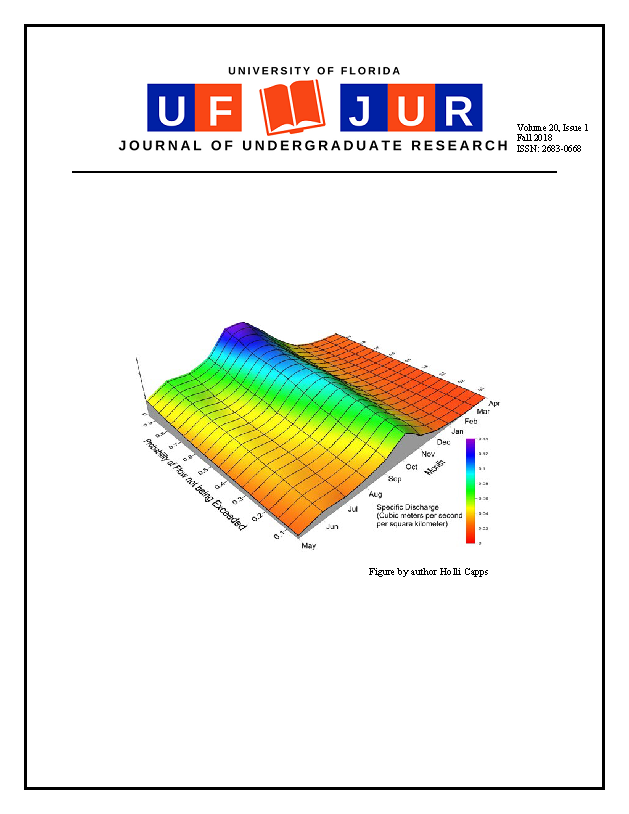Control of the Upper Limbs for Rehabilitative Arm-Cycling via Functional Electrical Stimulation
DOI:
https://doi.org/10.32473/ufjur.v20i1.106312Keywords:
functional electrical stimulation, nonlinear controls, control systemsAbstract
Functional electrical stimulation (FES) is the application of electrical current across muscle fibers to elicit muscle contractions with the goal of achieving some function outcome (e.g. walking, cycling). FES-cycling has become a very popular rehabilitative strategy over the years as it has proven to yield numerous health benefits for individuals suffering from neurological conditions. In this paper the idea of FES-cycling is extended to the upper limbs and a new arm-cycling testbed is introduced. A dynamic model for the arm-cycle-rider system is presented and a robust sliding-mode controller is developed for the nonlinear, autonomous, state-dependent, switched system. The controller is designed with the goal of tracking a specified crank velocity by switching between muscle stimulation and an electric motor. Despite the uncertainties and nonlinearities associated with the system, global exponential tracking of the desired crank trajectory is proven with a Lyapunov-based stability analysis. Preliminary experiments are performed with an able-bodied subject to characterize the performance of the designed controller. The results of the experiment are presented to illustrate stable tracking of the designed control system.
References
C.-W. Peng, S.-C. Chen, C.-H. Lai, C.-J. Chen, C.-C. Chen, J. Mizrahi, and Y. Handa, “Review: Clinical benefits of functional electrical stimulation cycling exercise for subjects with central neurological impairments,” J. Med. Biol. Eng.,
vol. 31, pp. 1-11, 2011.
D.J. Pons, C. L. Vaughan, and G. G. Jaros, “Cycling device powered by the electrically stimulated muscles of paraplegics,” Med. Biol. Eng. Comput., vol. 27, no. 1, pp. 1-7, 1989.
M. J. Bellman, T. -H. Cheng, R. J. Downey, C. J. Hass, and W. E. Dixon, "Switched Control of Cadence During Stationary Cycling Induced by Functional Electrical Stimulation," IEEE Transactions on Neural Systems and Rehabilitation Engineering, Vol. 24, No. 12, pp. 1373-1383 (2016).
W. E. Dixon and M. J. Bellman, "Cycling Induced by Functional Electrical Stimulation: A Control Systems Perspective," ASME Dynamic Systems & Control Magazine, Vol. 4, No. 3, pp. 3-7 (2016).
M. J. Bellman, R. J. Downey, A. Parikh and W. E. Dixon, "Automatic Control of Cycling Induced by Functional Electrical Stimulation with Electric Motor Assistance," IEEE Transactions on Automation Science and Engineering, Vol. 14, No. 2, pp. 1225-1234 (2017).
D. Liberzon, Switching in Systems and Control. Birkhauser, 2003.
A. Carraha, C. Cousin, V. Duenas, C. Rouse, and W. Dixon, “Stationary Arm Cycling Induced by Functional Electrical Stimulation – Muscle Zone Characterization,” Journal of Undergraduate Research, University of Florida, Vol. 18, Issue 3, 2017.
V. H. Duenas, C. A. Cousin, A. Parikh, P. Freeborn, E. J. Fox, and W. E. Dixon, "Motorized and Functional Electrical Stimulation Induced Cycling via Switched Repetitive Learning Control," IEEE Transactions on Control Systems Technology, to appear.
Downloads
Published
Issue
Section
License
Some journals stipulate that submitted articles cannot be under consideration for publication or published in another journal. The student-author and mentor have the option of determining which journal the paper will be submitted to first. UF JUR accepts papers that have been published in other journals or might be published in the future. It is the responsibility of the student-author and mentor to determine whether another journal will accept a paper that has been published in UF JUR.

